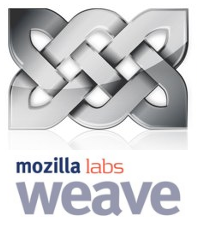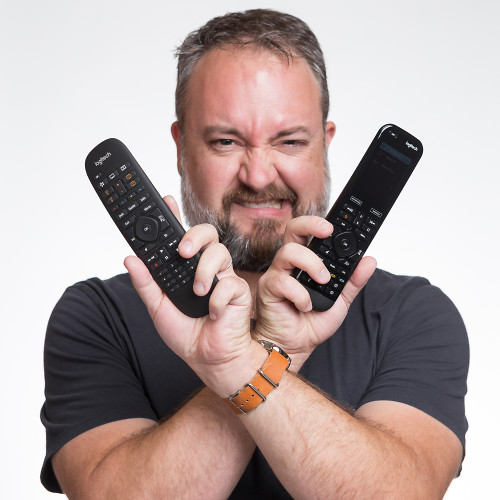Q&A with Mozilla Fennec's Brad Lassey

Unless you're a real dev-type, the "Milestone Release" of Mozilla's Fennec mobile browser likely was a nonstarter — it's a pre-alpha build and not at all intended to serve as a daily browser just yet. But what it does do is show us that work on the browser is progressing nicely for Windows Mobile.
We're serious about our excitement for Fennec from what we've seen in the desktop release. When all is said and done, it likely will give the iPhone's mobile Safari a run for its money. Javascript engine. Extensions. Cloud syncing for bookmarks and the like. We could go on. But if you're a desktop Firefox-lover, you know where we're coming from.
Fennec developer Brad Lassey, who joined the company in October 2008 to work on mobile products, agreed to answer a few of our burning questions about Fennec. Will it be available for non-touchscreen phones? What's up with Fennec for our cousins over at NokiaExperts? When might we see a proper Windows Mobile beta? And what can we do to help?
Lassey's answers, after the break.
How long has Fennec been in development?
Fennec has been in development for just over a year. Doug Turner wrote a great blog post detailing the history of Mozilla on Windows Mobile up to this week's milestone release. (http://dougt.wordpress.com/2009/02/10/a-short-history-of-mozilla-on-windows-mobile/)
Can you explain a little about the life cycle? What's the difference between a "milestone" release and an alpha or beta release versus the "finished" product?

Final releases are feature complete, polished and have been vetted by Mozilla's QA [quality assurance] team. Beta releases are feature complete and intended for testing while development continues on clean up and general bug fixing. Alpha releases are intended for testing purposes only, while development continues on features that will be in the final release.
Get the Windows Central Newsletter
All the latest news, reviews, and guides for Windows and Xbox diehards.
Pre-alpha (aka milestone) releases are intended to allow developers to try the in-progress work and report bugs. Milestone's are important for mobile products due the the differences between various hardware platforms. They allow us to get early testing and bug reports on many more devices than we have access to. This particular milestone marks the first time Fennec is buildable for Windows Mobile from a publicly available repository, and we hope that will encourage outside developers to become involved in the project.
We heard on this week's conference call that you're still looking to get the beta out later this month. If that's still on track, do you have a ballpark date for when "common" Windows Mobile users might expect a release?
The beta referred to on the conference call was for the Nokia Maemo software platform. It is further along than the Windows Mobile product. We are working hard to get the Windows Mobile product caught up to the Maemo product in terms of quality and anticipate that occurring sometime over the summer.
We've been enjoying the desktop version of Fennec for a while. It scores a 93/100 on the Acid3 test. The mobile build should have the same rendering performance, correct?
Fennec uses the same rendering and JavaScript engine on all platforms and should have the same Web site compatibility.
Can you speak of the features or overall approach to how Fennec works as compared to to Pocket IE, Opera 9.5, and Skyfire? And mobile Safari on the iPhone side?

We have two major goals that drive our approach in building Fennec. The first is to bring users the same level of web compatibility, security and ease of use that has made Firefox so successful. For example: Fennec uses the same URL bar (the "awesome bar") that was introduced in Firefox 3. Its ease of use has an even bigger impact in Fennec because of the typing it saves the user. We are also working on a feature called Weave which will sync the users history bookmarks and open tabs between all of their desktops, laptops and mobile devices. Finally, Fennec supports the same extension mechanism as Firefox, allowing developers to extend its functionality and users to customize their experience.
Second we aim to make the web a first-class development platform for mobile devices. We take advantage of the technologies that have allowed Firefox to do the same for the desktop. Fennec has the same JavaScript engine as Firefox, complete with its latest advances in performance, and the same scriptable plug-in interface that plug-in developers are already familiar with. Finally, we are working on ways to expose mobile specific functionality, such as geolocation and phone control, to developers.
You stated in your blog the reasons for using the HTC Touch Pro with this early release. Will Fennec be only for touchscreen devices? And is the Touch Pro being considered a basic minimum hardware standard?
The current design of Fennec is strictly for use on touchscreen devices. We will also support non-touchscreen devices in the future. We have targeted the HTC Touch Pro because of its ability to run full debug builds. Our goal is to support as many devices as is reasonable.
Fennec's running on the Nokia N810, and soon on Windows Mobile. Any other operating systems on the horizon?
There is an effort under way to port to Symbian Series 60. Christian Sejersen, Mozilla's director of mobile engineering, announced this effort on his blog in December 2008 (http://www.christiansejersen.com/blog/2008/12/10/fennec-mobile-firefox-for-symbian/).
As our readers are testing the various pre-releases, what's the best way for them to provide feedback and report bugs?
We'd like to express our thanks to everyone who has taken the time to try our milestone builds. A large part of Firefox's success can be credited to our strong community including the 20,000 people who download and test our nightly builds.We hope to grow Fennec's tester community in a similar fashion and encourage people to report any bugs they find to our bug tracking system (https://bugzilla.mozilla.org/). Testers can also get involved here: https://quality.mozilla.org/get-involved/. (Please note, the page focuses on Firefox, but most of it is applicable to Fennec. More information about Fennec's test plan can be found here: https://wiki.mozilla.org/QA/Fennec1.0/TestPlan.)
Phil is the father of two beautiful girls and is the Dad behind Modern Dad. Before that he spent seven years at the helm of Android Central. Before that he spent a decade in a newsroom of a two-time Pulitzer Prize-finalist newspaper. Before that — well, we don't talk much about those days. Subscribe to the Modern Dad newsletter!

